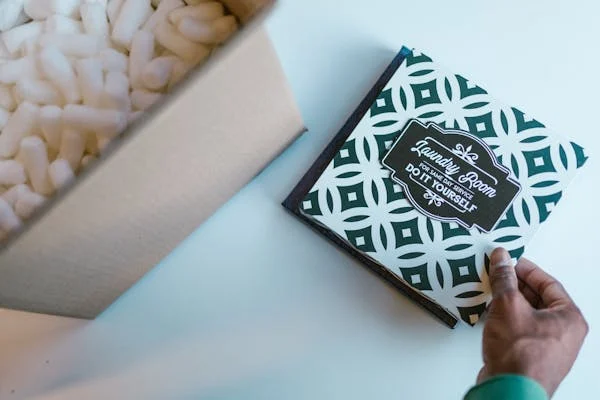In the digital age, the humble business card remains a powerful tool for networking and brand representation. For social media marketing professionals, a well-designed business card can make a lasting impression, showcasing creativity and professionalism. This guide will walk you through designing an effective business card that reflects your brand and attracts potential clients.
Understanding the Purpose of Your Business Card
Networking Tool
A business card is a vital networking tool that facilitates the initial connection with potential clients, partners, or collaborators. In the fast-paced world of social media marketing, networking is essential for growth and opportunities.
Your business card should make it easy for people to contact you and should leave a memorable impression that encourages them to reach out. When attending industry events, conferences, or meetups, handing out a professionally designed business card can spark conversations and lead to future collaborations or business opportunities.
Marketing and Branding
Your business card serves as a mini marketing tool that encapsulates your brand identity. It’s an opportunity to communicate what you do and how you stand out in the social media marketing landscape. Incorporate your brand’s logo, colors, and tagline to reinforce your brand message.
The design should be visually appealing and reflect the essence of your brand, whether it’s innovative, professional, or creative. A well-designed business card can act as a tangible reminder of your brand, encouraging potential clients to remember you when they need social media marketing services.
Establishing Professionalism
First impressions are crucial, and a high-quality business card can help establish your professionalism. It demonstrates that you are serious about your business and invested in maintaining a polished and professional image.
Ensure that the card is printed on high-quality paper and has a clean, organized layout. This attention to detail reflects your commitment to excellence and can instill confidence in potential clients or partners.
Providing Key Information
A business card succinctly provides all the key information needed to contact you. This includes your name, job title, company name, phone number, email address, and social media handles. For social media marketing professionals, it’s also beneficial to include a link to your online portfolio or LinkedIn profile.
This allows potential clients to easily access your work and learn more about your expertise. Including a QR code that links to your website or social media profiles can make it even easier for recipients to connect with you online.
Differentiating Yourself from Competitors

In the competitive field of social media marketing, differentiating yourself from others is essential. Your business card can be a tool to showcase your unique selling points. Whether it’s through innovative design, a catchy tagline, or highlighting a unique service offering, make sure your card communicates what sets you apart.
For instance, if you specialize in a particular niche, such as influencer marketing or content creation, make that clear. This differentiation helps potential clients quickly understand the value you bring and why they should choose your services over others.
Encouraging Further Engagement
Your business card should not only provide information but also encourage further engagement. Consider including a call-to-action that invites the recipient to visit your website, follow your social media profiles, or schedule a consultation.
This proactive approach can lead to more meaningful interactions and potentially convert a casual encounter into a business opportunity. For example, a simple call-to-action like “Check out our latest case studies on our website” or “Follow us on Instagram for daily marketing tips” can prompt recipients to engage with your brand further.
Reflecting Your Personality
While maintaining professionalism is important, your business card should also reflect your personality. As a social media marketing professional, you’re likely involved in creative and dynamic work, and your business card should convey that energy.
Use design elements that reflect your personal style and the tone of your brand. Whether it’s through bold colors, playful typography, or unique graphics, let your business card showcase your individuality. This personal touch can make your card more memorable and relatable.
Designing Your Business Card
Choosing the Right Layout
The layout of your business card plays a significant role in its effectiveness. A clean, organized layout ensures that all information is easily readable. Start by choosing a standard size for your card, typically 3.5 x 2 inches.
Decide on the orientation, whether landscape or portrait, based on your brand’s style and the amount of information you need to include. Use grid lines to align text and images properly, maintaining a balanced and professional appearance.
Selecting Typography
Typography is a critical element in your business card design. Choose fonts that are easy to read and reflect your brand’s personality. For example, a modern, sans-serif font can convey a contemporary and professional image, while a script font might suggest creativity and elegance. Use no more than two different fonts to keep the design cohesive. Ensure that the font size is large enough to be readable but not so large that it overwhelms the card.
Incorporating Your Brand Colors
Your brand colors should be prominently featured in your business card design. Use them strategically to create a visually appealing and cohesive look. For example, you can use your primary brand color for the background and your secondary colors for text and accents.
Be mindful of color contrast to ensure that text is legible. If your brand colors are bold, consider using a white or neutral background to make the colors stand out without overwhelming the design.
Adding Your Logo
Your logo is a key element of your brand identity and should be prominently displayed on your business card. Place it in a position where it’s easily noticeable but doesn’t overshadow other important information.
Typically, the top left or center of the card works well. Ensure that the logo is high-resolution to avoid any blurriness when printed. If your logo has intricate details, consider using a simplified version for better clarity on the small card space.
Including Social Media Icons
As a social media marketing professional, it’s essential to include your social media handles on your business card. Use recognizable social media icons to indicate your profiles on platforms like LinkedIn, Twitter, Instagram, and Facebook.
Place these icons in a clean and organized manner, either in a row or column, to maintain a professional look. Ensure that the icons are consistent in size and style to avoid a cluttered appearance.
Using High-Quality Materials
Selecting Premium Paper Stock
Choosing the right paper stock is crucial for creating a professional and memorable business card. Premium paper stocks such as cotton, linen, or textured finishes can significantly enhance the tactile experience of your card. These materials feel more substantial and leave a lasting impression.
Consider the weight of the paper; a thicker card (300-350 gsm) feels more luxurious and durable compared to standard options. Opting for eco-friendly paper stocks, such as recycled or FSC-certified paper, can also reflect your commitment to sustainability, which can be a selling point for many clients.
Special Finishes and Coatings
Special finishes and coatings can add a unique touch to your business card, making it stand out. Matte and glossy finishes offer different aesthetic appeals; matte provides a smooth, non-reflective look, while glossy adds shine and vibrancy to colors.
For a more sophisticated feel, consider a soft-touch coating, which gives the card a velvet-like texture. UV spot coating can be used to highlight specific elements, such as your logo or name, adding depth and contrast to the design.
Embossing and Debossing
Embossing and debossing are techniques that create a raised or recessed effect on your business card, adding a tactile dimension that can make your card more engaging. Embossing raises elements like logos or text above the card’s surface, while debossing presses them into the card. These effects can be used to emphasize your brand’s name or key information, giving your card a sophisticated, high-end feel.
Foil Stamping
Foil stamping involves applying a thin layer of metallic foil to certain areas of your business card, creating a striking and eye-catching effect. Gold, silver, and copper foils are popular choices that add a touch of elegance and luxury.
Foil stamping can be used to highlight important details, such as your logo or company name, making them stand out. This technique not only enhances visual appeal but also conveys a sense of premium quality and attention to detail.
Die-Cutting
Die-cutting allows you to create custom shapes and cutouts on your business card, adding a unique and memorable twist. This technique can be used to create non-traditional card shapes, such as rounded corners, or to cut out specific parts of the card to draw attention to particular elements.
For example, you could die-cut your logo or a unique design element that reflects your brand. Custom shapes can make your card more visually interesting and help it stand out in a stack of traditional rectangular cards.
Using High-Resolution Images and Graphics
High-resolution images and graphics are essential for maintaining a professional look. Blurry or pixelated images can detract from the overall quality of your card. Ensure that all images, logos, and graphics are high-resolution (at least 300 dpi) and properly formatted for print. This ensures that your card looks sharp and professional, reflecting the quality of your services.
Choosing the Right Color Palette
The color palette you choose for your business card should align with your brand identity and evoke the desired emotional response. Colors can convey different messages; for example, blue often represents trust and professionalism, while red can signify passion and energy.
Use your brand’s primary and secondary colors consistently to maintain brand recognition. Consider using spot colors for a more vibrant and accurate representation of your brand colors.
Incorporating Unique Textures
Incorporating unique textures into your business card can create a more engaging and memorable experience for the recipient. Textured paper stocks, such as linen or felt, add a tactile dimension that makes your card stand out.
You can also consider using layered papers or sandwich cards, where a colored core is sandwiched between two outer layers, creating a striking edge detail. These textural elements can make your card more visually and physically appealing.
Sustainable and Eco-Friendly Options
Incorporating sustainability into your business card design can resonate well with environmentally conscious clients. Choose recycled paper stocks or opt for biodegradable materials.
Highlighting your use of eco-friendly materials on your card can also be a unique selling point. Many printing companies now offer sustainable options, including soy-based inks and waterless printing processes, which reduce environmental impact.
Making Your Card Interactive
Adding a QR Code
Integrating a QR code into your business card is a simple yet effective way to make it interactive. The QR code can link to various online resources, such as your portfolio, website, LinkedIn profile, or a specific landing page designed for potential clients. This provides recipients with immediate access to more information about you and your services, enhancing the initial contact.
Make sure the QR code is prominently placed and easily scannable. Test it with multiple devices to ensure functionality. You can also customize the QR code design to match your brand colors and style, making it visually appealing and consistent with your overall branding.
Using NFC Technology
Near Field Communication (NFC) technology allows for a seamless exchange of information through a simple tap of the business card against a smartphone. Embedding an NFC chip in your business card can transfer your contact details, portfolio links, or social media profiles directly to the recipient’s device.
This not only provides convenience but also creates a modern and tech-savvy impression. NFC-enabled cards can be slightly more expensive, but the wow factor and ease of use can justify the investment, particularly for professionals in the tech-savvy social media marketing industry.
Incorporating Augmented Reality (AR)
Augmented Reality (AR) can add a cutting-edge dimension to your business card. Using AR apps, you can create an interactive experience where recipients can scan your card with their smartphone to reveal additional digital content. This could be a video introduction, a showcase of your recent projects, or an interactive portfolio.
AR not only makes your business card memorable but also provides an engaging way for potential clients to learn more about your services. Platforms like Blippar or ZapWorks offer user-friendly tools to create AR experiences that can be integrated with your business cards.
Custom Shapes and Fold-Out Designs
Custom shapes and fold-out designs can transform your business card into an interactive experience. Instead of the traditional rectangular shape, consider unique die-cut shapes that reflect your brand or industry. For example, a business card shaped like a smartphone could be perfect for a social media marketing professional.
Fold-out designs can provide extra space for additional information or visuals without overcrowding the card. This can include a mini-portfolio, client testimonials, or a step-by-step guide to your services. These unique designs make your card stand out and invite recipients to explore it further.
Interactive Print Features
Interactive print features, such as scratch-off panels, lenticular printing, or pop-up elements, can add a playful and engaging aspect to your business card. Scratch-off panels can be used for revealing special offers, discounts, or hidden messages.
Lenticular printing creates an illusion of depth or movement, which can be eye-catching and intriguing. Pop-up elements add a three-dimensional aspect to the card, making it more memorable. These features not only make your business card fun but also encourage recipients to engage with it, increasing the chances of them remembering you.
Personalized URLs
Incorporating personalized URLs (PURLs) into your business card design can provide a tailored experience for each recipient. PURLs direct users to a customized landing page that addresses their specific needs or interests. This can be particularly useful in follow-up communications, allowing you to provide relevant information based on your initial interaction.
For instance, after meeting a potential client interested in social media strategy, you can direct them to a landing page that showcases your expertise and case studies in that area. Personalized URLs show attention to detail and a high level of customer care.
Interactive Business Card Apps
There are several apps available that enhance the interactivity of business cards. Apps like HiHello and L-Card Pro allow you to create digital business cards that can be easily shared and saved.
These apps often include features like clickable links, embedded videos, and social media integration, providing a richer experience than traditional business cards. Encouraging recipients to download and use these apps can streamline the exchange of information and ensure that your contact details are readily accessible.
Incorporating Gamification Elements
Gamification can make your business card experience more engaging and memorable. Consider incorporating elements like a mini-game or a challenge that can be accessed via a QR code or NFC chip. This not only entertains the recipient but also increases the time they spend interacting with your brand.
For example, you could create a simple quiz about social media trends, with a link to the answers and further reading on your website. Gamification adds an element of fun and can make your business card stand out from the competition.

Creating a Cohesive Brand Experience
Consistency Across Platforms
Ensuring consistency across all your branding platforms is crucial for creating a cohesive brand experience. Your business card should seamlessly integrate with your website, social media profiles, email signatures, and any other marketing materials.
Start by defining a clear brand style guide that includes your logo, color palette, typography, and tone of voice. This guide will serve as a reference for maintaining consistency across all touchpoints. When your business card matches your online presence, it reinforces brand recognition and builds trust with potential clients.
Utilizing Brand Elements Effectively
Effective use of brand elements on your business card can significantly enhance its impact. Your logo should be prominently displayed and sized appropriately to maintain clarity and visibility. Choose brand colors that complement each other and ensure they are used consistently in all your materials.
Typography should be legible and reflect your brand’s personality, whether it’s modern and sleek or traditional and professional. By thoughtfully incorporating these elements, you create a business card that not only looks good but also aligns with your overall brand identity.
Personalizing Your Approach
Personalization can make your business card more memorable and meaningful. Consider adding a personal touch by including a professional headshot or a personalized message. This approach can help potential clients remember who you are and feel a stronger connection to your brand.
For social media marketing professionals, including a brief tagline or unique selling proposition can quickly communicate what sets you apart from the competition. Personalized elements show that you value individual connections and are attentive to detail.
Reflecting Brand Values and Mission
Your business card should also reflect your brand values and mission. If your brand emphasizes sustainability, use eco-friendly materials and mention this commitment on the card. If innovation is a core value, incorporate modern design elements or interactive features that demonstrate this.
Clearly conveying your brand’s mission and values on your business card can attract like-minded clients and partners who share your vision. This alignment can lead to more meaningful and long-lasting business relationships.
Enhancing the User Experience
Think about the user experience when designing your business card. The layout should be clean and intuitive, making it easy for recipients to find and understand the information. Avoid clutter by prioritizing essential details and using white space effectively.
Consider the journey a potential client takes when interacting with your card – from the tactile feel of the paper to the visual appeal of the design and the ease of scanning a QR code or reading contact details. A positive user experience can enhance the overall perception of your brand.
Leveraging Storytelling
Storytelling can be a powerful tool in your business card design. Use visuals and text to tell a brief story about your brand. This could be through a creative tagline, a unique logo design that reflects your brand’s journey, or even a mini case study that highlights a successful project.
Storytelling makes your business card more engaging and memorable, providing a deeper connection with your audience. It helps potential clients understand not just what you do, but why you do it and the impact you aim to create.
Aligning with Marketing Campaigns
Your business card can be a dynamic part of your broader marketing campaigns. Align its design and messaging with current promotions or brand initiatives. For example, if you are running a campaign focused on a new service, highlight this on your business card with a special offer or call-to-action that directs recipients to a landing page. This integration ensures that your business card supports and amplifies your marketing efforts, creating a unified brand experience.
Regular Updates and Iterations
As your brand evolves, so should your business card. Regularly review and update your business card to reflect any changes in your branding, services, or contact information. Staying current ensures that your card remains an effective and accurate representation of your brand.
Consider gathering feedback from clients and colleagues about your business card design and functionality. Use this input to make iterative improvements that enhance the card’s effectiveness.
Integrating Feedback Mechanisms
Integrating feedback mechanisms into your business card can help you gather valuable insights. For example, include a QR code that links to a short survey asking for feedback on your card design and the ease of accessing your information.
This not only shows that you value the recipient’s opinion but also provides you with data to refine your branding materials. Positive feedback can be leveraged as testimonials on your website or social media, while constructive feedback can guide future improvements.
Practical Considerations
Printing and Costs
Investing in high-quality printing for your business cards is essential for creating a professional and lasting impression. While it may be tempting to cut costs, skimping on printing quality can negatively impact your brand’s image. Work with a reputable printer to ensure the best results.
Ask for samples to assess the quality of their work and choose the right paper stock and finishes that align with your brand. Consider ordering a small batch initially to see how they look and feel. Remember that your business card is a reflection of your brand, and investing in quality printing can enhance your perceived value.
Choosing the Right Printer
Selecting the right printer involves more than just finding the lowest price. Look for printers who specialize in high-quality business cards and have experience with special finishes like embossing, foil stamping, and die-cutting.
Check reviews and ask for recommendations from colleagues. A good printer will provide design support, offer proofs before printing, and ensure that the final product meets your expectations. Building a relationship with a reliable printer can also streamline future orders and ensure consistency in your business cards.
Volume and Reorders
When deciding on the volume of business cards to print, consider how frequently you attend networking events, conferences, and client meetings. It’s often more cost-effective to order a larger quantity, but ensure you have a plan for updating the cards if any information changes.
Keep track of your inventory and reorder before you run out to avoid missing opportunities to distribute your cards. Establish a system for managing reorders and updating designs as needed, ensuring that your business cards are always current and ready for distribution.
Distribution Strategy
Having a distribution strategy for your business cards can maximize their impact. Always carry a stack of cards with you and be ready to hand them out at events, meetings, and even casual encounters. Include them in mailed packages, welcome kits for new clients, and thank-you notes.
Consider leaving a small holder with your cards at local businesses, coworking spaces, or industry events where your target audience frequents. Strategically placing your business cards in these locations increases their visibility and the likelihood of them reaching potential clients.
Tracking Effectiveness
To gauge the effectiveness of your business cards, implement a tracking system. Use unique QR codes or personalized URLs on your cards that direct recipients to specific landing pages.
This allows you to track how many people visit your website from the business card and measure engagement. Analyzing this data helps you understand the impact of your business cards and refine your design or distribution strategy based on what works best.
Legal and Compliance Considerations

Ensure that your business card design complies with any relevant legal and compliance requirements. For example, if you are using any trademarks or copyrighted material, make sure you have the proper permissions.
Include any necessary disclaimers, especially if you’re in an industry with specific regulatory requirements, such as finance or healthcare. Being mindful of these considerations protects your brand and maintains a professional image.
Adapting to Digital Trends
Incorporating digital trends into your business card strategy can enhance its effectiveness. For instance, using augmented reality (AR) features can create an interactive experience, while Near Field Communication (NFC) chips can provide instant digital connections. Stay updated with the latest technology trends that can be integrated into your business card design, making it more relevant and engaging for tech-savvy clients.
Environmental Impact
Consider the environmental impact of your business cards. Opt for sustainable materials like recycled paper or biodegradable options. Highlighting your commitment to sustainability can resonate with environmentally conscious clients.
Additionally, choose printing processes that are eco-friendly, such as waterless printing or using soy-based inks. Making environmentally responsible choices not only benefits the planet but also enhances your brand’s reputation.
Customization for Target Audiences
Customizing your business cards for different target audiences can make your interactions more meaningful. For example, if you work with clients across various industries, you could have different versions of your card that highlight relevant services or expertise.
Tailoring your business card to specific audiences shows that you understand their needs and are prepared to offer specialized solutions. This level of personalization can make a significant difference in how your brand is perceived.
Conclusion
Designing an effective business card for social media marketing professionals requires a strategic approach that goes beyond aesthetics. Your business card is a powerful tool for making lasting first impressions, showcasing your brand, and facilitating connections.
By understanding the purpose of your business card, using high-quality materials, making it interactive, creating a cohesive brand experience, and considering practical aspects like printing, distribution, and tracking effectiveness, you can create a card that stands out and adds real value to your networking efforts.
Read Next:
- Innovative Marketing Strategies for Construction Companies
- Cost-Free Marketing Ideas for Small Businesses
- Compassionate Marketing Strategies for Hospice Services
- Holiday Marketing Strategies to Boost Sales and Engagement
- Spooky Halloween Marketing Ideas to Engage Customers





















Comments are closed.